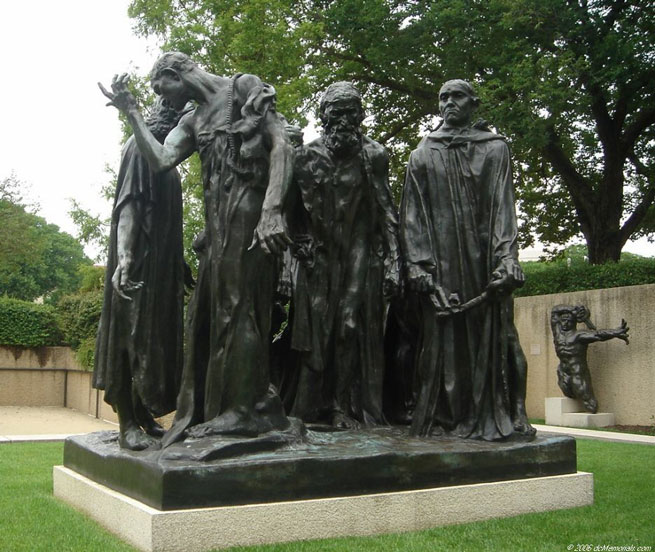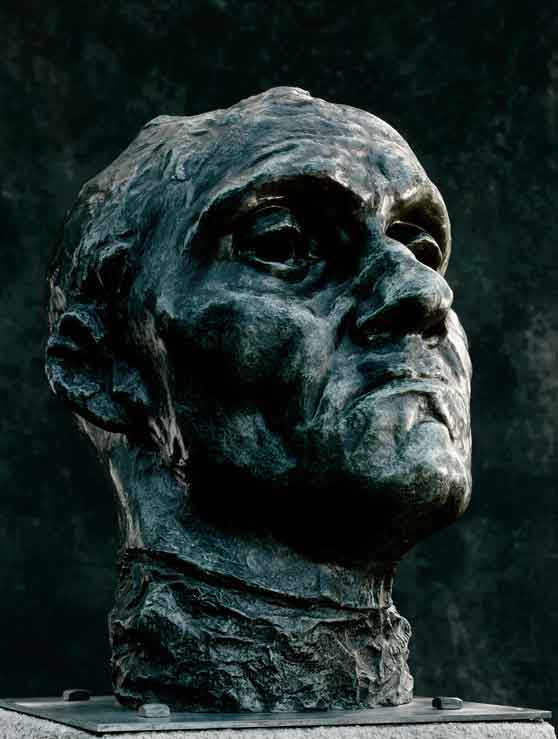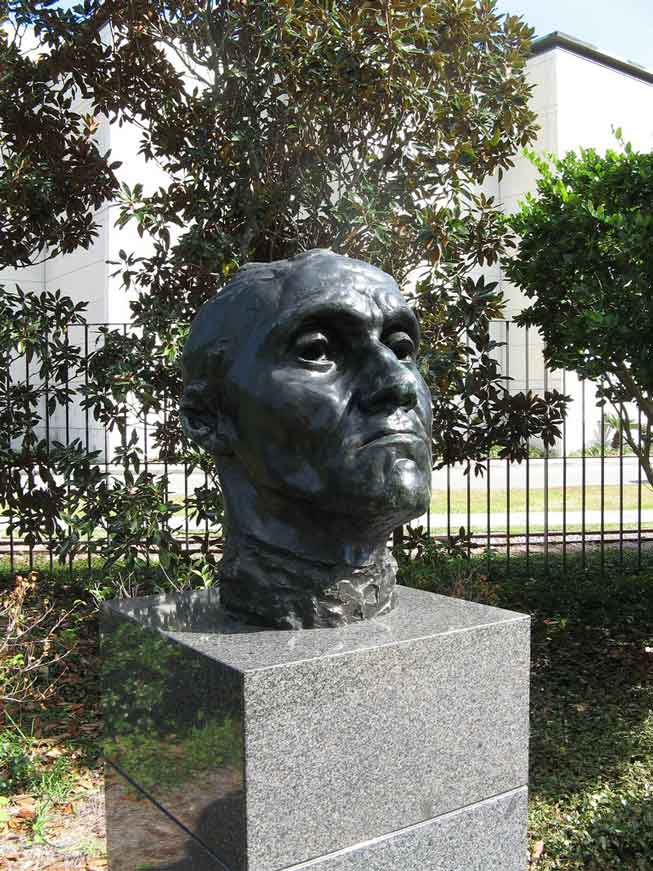On August 1, 1347, the city of Calais in France had fallen. The siege had been long, over 8 months, and the citizens were proud of their massive castle which was over 1,000 yards wide, surrounded by two moats, and protected by the sea at its back.
The terms of the surrender were the lives of the six noblest men in the city. These men, called burghers, were to leave the city with a noose around their neck and present themselves and the keys to the city to the conquering king, Edward III of England.
The most prominent of them all was Jean d’Aire and his face says it all.
Over 500 years later the citizens of Calais asked sculptor August Rodin to commemorate that day with a statue of all six burghers marching to their doom. He complied and ended up creating one of his best masterpieces.
The bust you see above is but one part of the statue, albeit the most famous. In later years Rodin would create several copies of that face for busts and in giant size. Today, you can find these copies all around the world at museum, parks, and in Calais.
But, first the original:
All the statues walk to face an uncertain future but you can see that Jean d’Aire has the most poetic face. Take a look at this close-up.
And, the giant size.
The story says that Edward III attempted to kill all six men and the entire city but his advisors pressured him not to. Eventually he would let them all go if they left the city, though he did feed them before they left. The story also says that he took care of them for the rest of his life.
But, who knows how much of that is true, you can read the full story here (and see another version of Jean d’Aire), find a history of the Siege of Calais, and read about the provenance of the sculpture itself.
—
—
Photos: Hayhill (bust) – All Six Men (DC Memorials) – Head (LACMA) – Giant Size (UrbanMKR)



